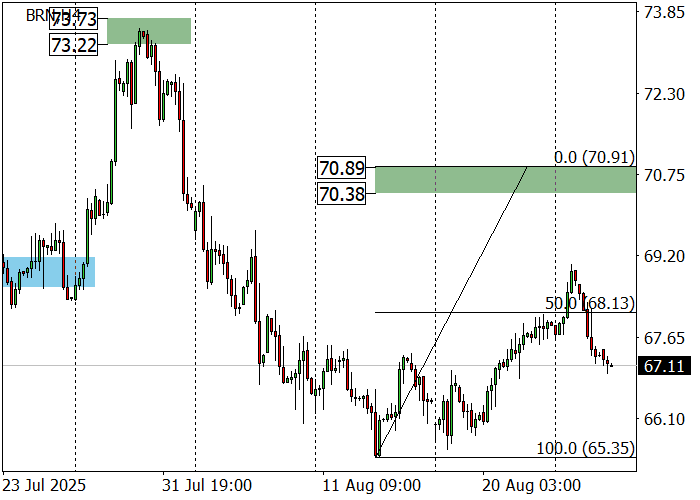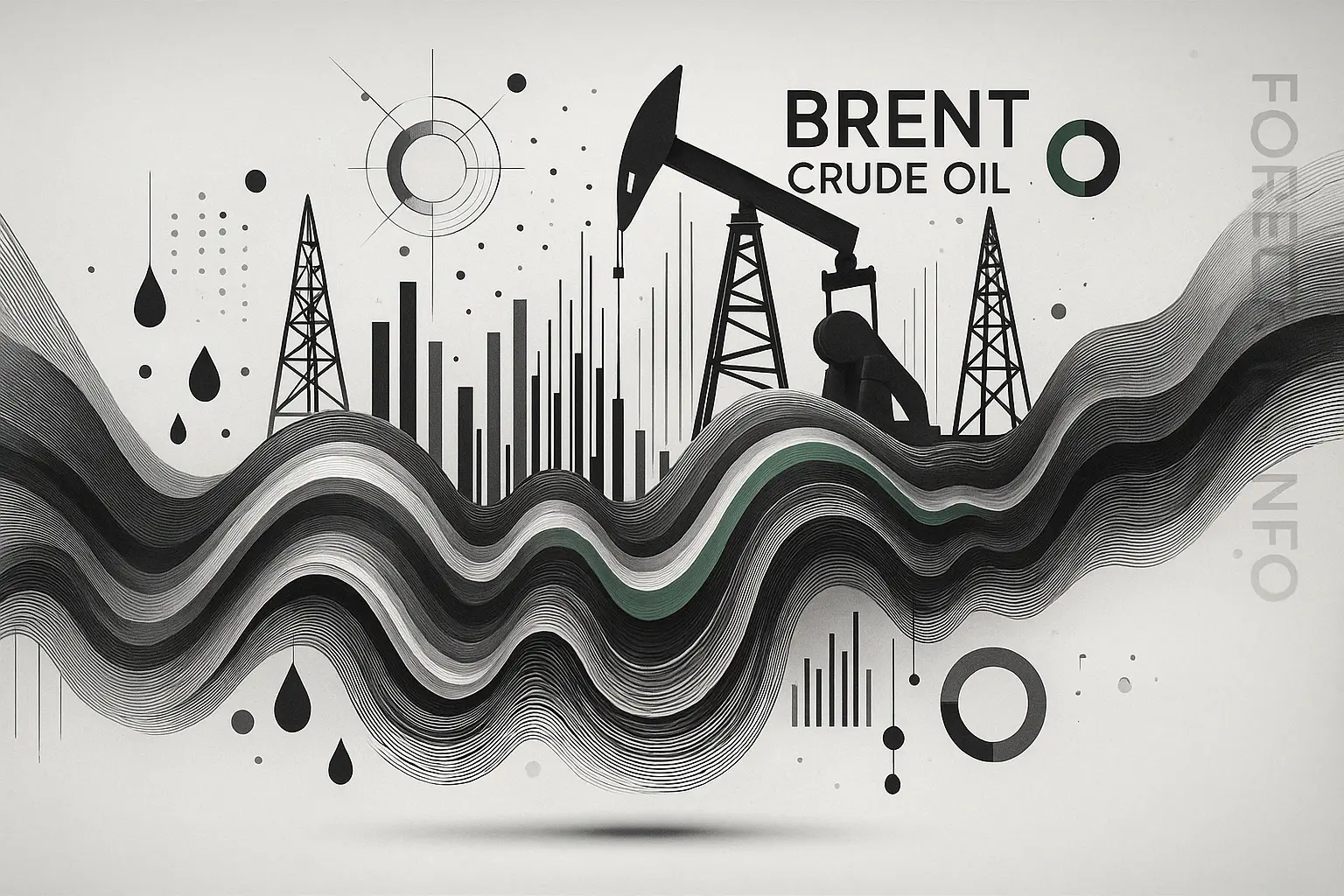Additionally, India reduced purchases of Russian hydrocarbons due to a 50% U.S. tariff imposed today, negatively affecting trade flows and global demand. Some sectors, like electronics and pharmaceuticals, remain exempt, but textiles and footwear are under pressure, reducing overall fuel demand. Meanwhile, API data showed U.S. crude inventories at –0.974M barrels, compared to the forecast –1.700M, signaling weaker consumption.
Looking ahead, investors expect the Federal Reserve to cut rates from 4.50% to 4.25% at its September 17 meeting, with CME FedWatch Tool showing an 87.3% probability. This could support a recovery in oil prices.
Support and Resistance Levels
The long-term trend remains bullish, with the instrument consolidating in the 68.20–67.00 area after May–June gains. A breakout above 70.89 would open the path toward 75.92–75.41. Otherwise, Brent risks testing August lows around 63.15–61.60.
Medium-term trend is bearish, with prices correcting toward resistance at 70.89–70.38. A rejection from this zone would keep short positions active toward 68.13 and 65.35.
- Resistance levels: 73.40, 78.50, 82.60
- Support levels: 67.00, 63.15, 61.60

Trading Scenarios
Buy Stop: Entry at 68.25, Take Profit 73.40, Stop Loss 65.70 (9–12 days).
Sell Stop: Entry at 65.65, Take Profit 63.15, Stop Loss 66.90.
Key Levels: 61.60, 63.15, 67.00, 73.40, 78.50, 82.60

